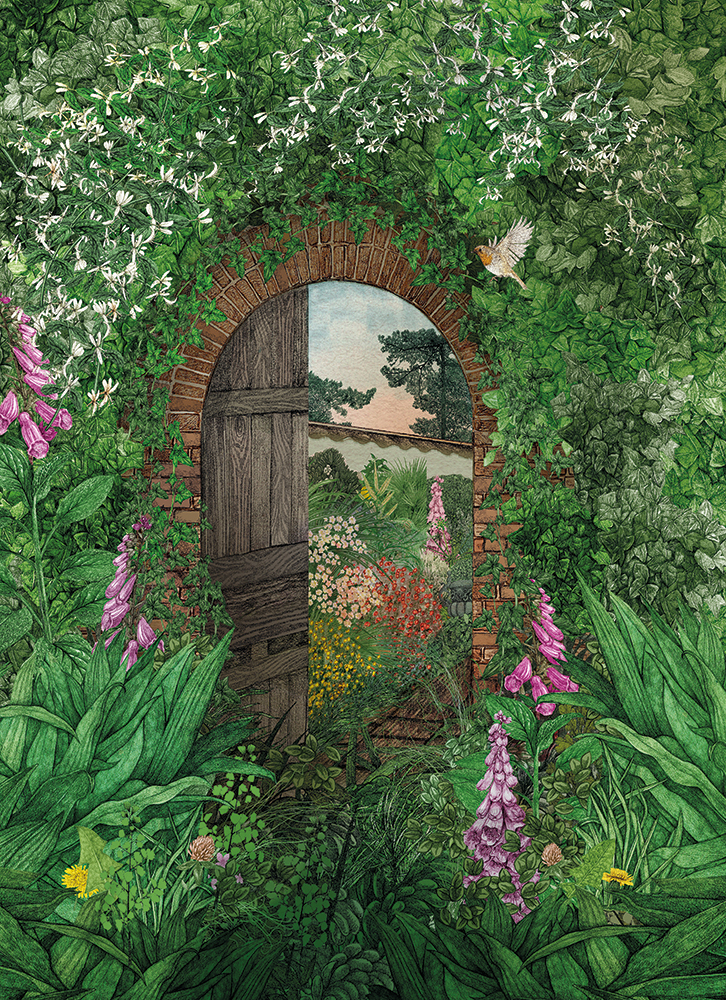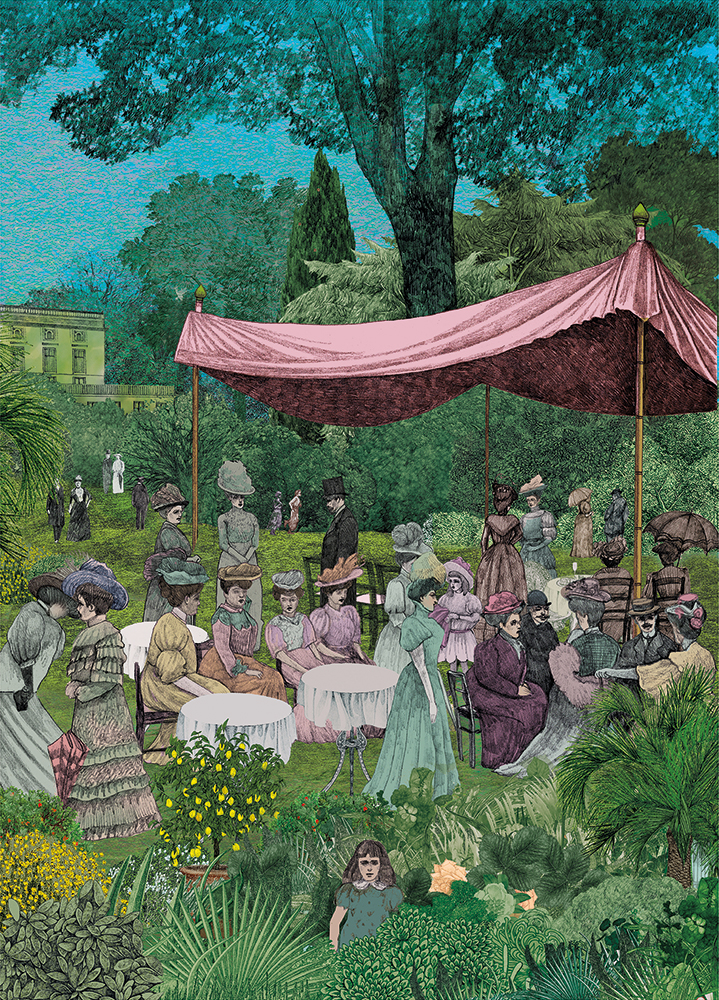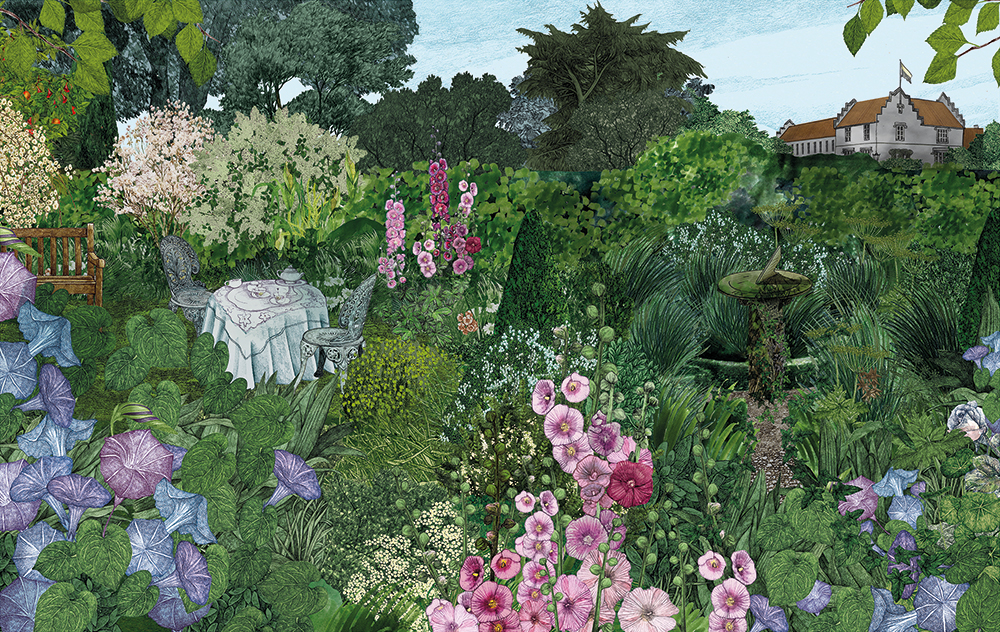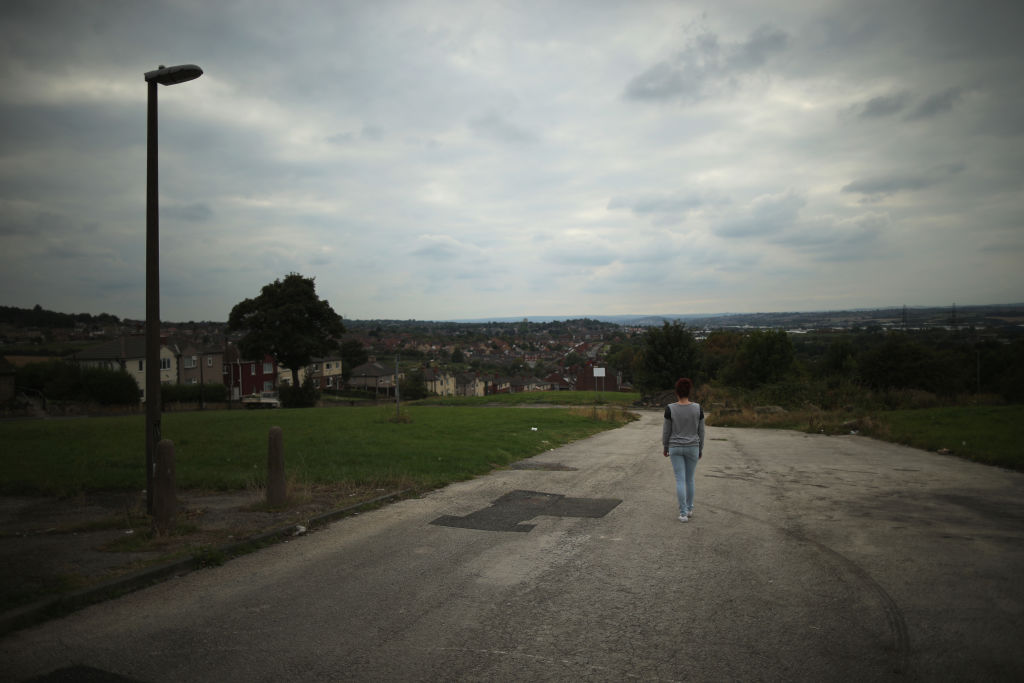
‘If Eve had had a spade in paradise, we should not have had all that sad business with the apple,’ claims the narrator of the novel Elizabeth and her German Garden (1898). The author, Mary Annette Beauchamp, eventually adopted the pen name Elizabeth von Arnim, merging her identity with the fictional character she had created. Both Elizabeths lived in Nassenheide in Pomerania (now Rzedziny, Poland), but whereas the fictional one had a spectacular garden, with a majestic clematis ‘Jackmanii’, giant poppies and delphiniums, the real Elizabeth, according to E.M. Forster (who was briefly employed as a tutor to the von Arnim children), did not have much of a garden at all.
‘I shall have a garden one day,’ Katherine Mansfield wrote to her husband four months before she died
Forster might have been being a bit catty, but the relationship between the real and the imaginary resonates throughout Sandra Lawrence’s Literary Gardens. The author adopts von Arnim’s episodic style, filled with confidences and confessions. She has chosen 30 eclectic literary gardens to showcase in this lavishly illustrated book andopenly admits:
Even I don’t approve of my choices. Or rather, I berate myself for the gardens I had to leave out, some of which were on the list from the very start but fell by the flower-strewn wayside as the word count caught up with me.
Lawrence’s gardens are a pleasing mix of the predictable and unexpected. ‘The Sheridan garden’, from von Arnim’s cousin, Katherine Mansfield’s short story ‘The Garden Party’, is described as ‘a garden for non-garden-fanatics, for people that just like “nice things”’. ‘I shall have a garden one day,’ Mansfield wrote to her husband John Middleton Murry four months before she died in January 1923. And there is now a garden in Wellington, New Zealand, at the Katherine Mansfield House and Garden Museum, but it is a memorial one. Mansfield’s own created garden lives on only in her fiction.
Some of the best known gardens are in children’s books: Frances Hodgson Burnett’s The Secret Garden, Lewis Carroll’s Alice’s Adventures in Wonderland, Philippa Pearce’s Tom’s Midnight Garden, C.S. Lewis’s The Chronicles of Narnia, Beatrix Potter’s The Tale of Peter Rabbit. While it would be hard to justify omitting any of these, finding something new to say about them might be challenging. But Lawrence does this with disarming ease. Writing about ‘The Apple Orchard of Cair Paravel’, she notes that as a child, Lewis
had been unmoved by gardens, but he later spoke with great emotion of a toy ‘forest’ his brother made on a biscuit tin lid when he was very tiny. A moss ‘forest floor’, decorated with twigs and flowers, it was ‘the first beauty I ever knew… as long as I live my imagination of paradise will retain something of my brother’s toy garden.’
Lawrence writes in her introduction: ‘I promise that everyone who reads this book will grind their teeth due to at least one or two scandalously obvious omissions.’ But that was not my experience. On the contrary, I was delighted to find two gardens from novels I reviewed more than 20 years ago making the list. ‘The Lipton Street Maze’ from Carol Shields’s Larry’s Party (1997) was inspired by a turf maze that the Canadian writer encountered in Saffron Walden:
If the section in Larry’s Party where Larry goes ‘mazing’ around the UK and Europe reads a little like a tourist gazetteer, there is good reason: Shields herself was dazzled by the intricacies of mazes and labyrinths.
Tan Twan Eng’s The Garden of Evening Mists (2012), begins: ‘On a mountain above the clouds once lived a man who had been the gardener of the Emperor of Japan.’ Lawrence comments: ‘Novel openings do not get more fairytale-like… but do not be fooled.’ The novel’s Yugiri garden is located in Malaya (now peninsular Malaysia).

Searching for a suitable location for his fictional Yugiri, Tan Twan Eng found only two Malaysian regions with a climate conducive for a Japanese garden. He chose the wild/semi-wild landscape of the Cameron Highlands, where the density of the rainforest meets the mystery of the mountains and uniformity of seemingly endless tea plantations, all scarred with a dark history of colonialism, occupation and civil war.
‘The Garden of Monsieur T–’, from Vivant Denon’s No Tomorrow (Point de Lendemain, 1777), is ‘built for clandestine rendezvous’. Denon wrote erotica before the French Revolution, avoided the guillotine, unlike many of the pleasure-seekers he described, and re-invented himself as the official artist on Napoleon’s Egyptian campaign, before becoming the first director of the Louvre. The erotica was reprinted under a pseudonym, Claude-Joseph Dorat, and remained popular with those nostalgic for pre-revolutionary hedonism. ‘I owe you many pleasures,’ Madame T– tells her baffled young lover in her husband’s garden, ‘but I have paid you with a beautiful dream.’
The 30 gardens are far-flung geographically and range across great swathes of time, from ‘The court gardens of the Empress of Japan’ in Sei Shonagon’s The Pillow Book (c.1000) to ‘Mrs Bulpit’s yard’ in Edmund White’s The Hanging Garden (2012). They are united by Lucille Clerc’s distinctive illustrations. Lawrence and Clerc have worked together before and there is something defiantly joyful in their collaboration, even where ‘Death’s garden’ in Terry Pratchett’s Mort (1987) is concerned: ‘Sir Terry Pratchett’s greatest contribution to botanical science is, without doubt, the reannual, a plant that you sow this season to harvest last year.’

Somewhat incongruously, visitor information for 15 of the gardens is given at the end, despite Lawrence’s repeated observation that they can only really be visited imaginatively. By chance, before I finished reading the book, I came across a beautiful description of the power of an imagined garden in Antonia Fraser’s latest book, The House that Spoke:
The Garden. That word. And I hadn’t even been and looked at it. Yet in my picture of myself, a picture in which I aimed to charm the reader without words, I perpetually walked among flowers. Yes, there must be a Garden.
The first time Fraser visited the house that has been her home for more than 66 years, she heard it speak to her in ‘a voice like a stationmaster on a country platform: clear and notably polite’ and it said ‘DON’T GO’. Afterwards she wondered if that voice was ‘all the work of a petulant imagination, determined to live in London in a house with a garden’. I have visited Marie-Antoinette’s biographer in her home and garden many times to discuss, among other shared interests, the French Revolution. Now that she has put her garden into a book, it will always be possible to return to it and meet her there – just as we can visit the 30 gardens Lawrence has chosen simply by opening the pages of the books they come from.








Comments